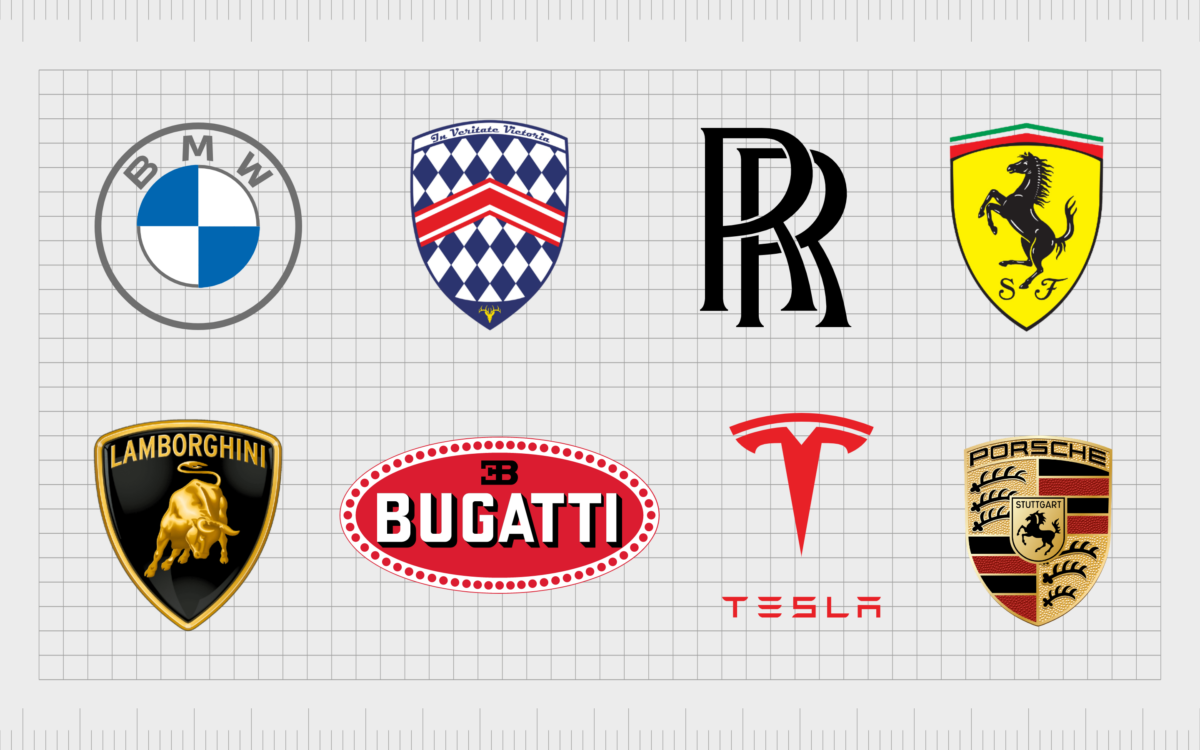The China Factor: How It Affects Luxury Car Brands Like BMW And Porsche

Table of Contents
The Growing Chinese Luxury Car Market
Market Size and Growth
The Chinese luxury car market is experiencing explosive growth. In 2023, it surpassed all other regions in sales volume, representing a significant portion of global luxury car sales.
- Market Share: BMW and Mercedes-Benz consistently vie for top positions in market share, followed closely by Audi and Porsche. Domestic brands are also making significant inroads.
- Growth Projections: Analysts predict continued, albeit potentially moderated, growth in the coming years, fueled by a rising disposable income among affluent Chinese consumers.
- Contributing Factors: Several factors contribute to this remarkable expansion, including a rapidly expanding middle class, increased urbanization, and a strong desire for aspirational products.
Consumer Preferences and Trends
Chinese luxury car buyers have distinct preferences compared to their Western counterparts. Understanding these nuances is crucial for success.
- Popular Models: SUVs and electric vehicles are particularly popular, reflecting the country's growing urbanization and focus on environmental sustainability. Specific models with advanced technology and luxurious features consistently rank highly.
- Valued Features: Beyond sheer luxury, Chinese consumers value technological advancements, particularly in areas like driver-assistance systems, infotainment, and connectivity. Brand prestige and social status also play a significant role in purchase decisions.
- Social Media Influence: Social media platforms like WeChat and Weibo heavily influence consumer opinions and brand perception, making digital marketing a vital component of any successful strategy in China.
The Impact of Government Policies
Government regulations significantly impact the luxury car market in China.
- Emission Standards: Stricter emission regulations are driving the adoption of electric and hybrid vehicles, forcing brands to adapt their product offerings.
- Import Tariffs and Subsidies: Import duties and government subsidies for electric vehicles influence pricing and profitability. This has driven some manufacturers to establish local production facilities.
- Infrastructure Development: Investment in charging infrastructure for electric vehicles is crucial for the long-term growth of this segment, creating both challenges and opportunities.
BMW and Porsche's China Strategies
Localization and Customization
Both BMW and Porsche have implemented robust localization strategies to cater to the specific needs and preferences of Chinese consumers.
- Model Customization: This involves offering models with features specifically designed for the Chinese market, including unique color options, interior design elements, and technological features.
- Targeted Marketing: Marketing campaigns are meticulously crafted to resonate with Chinese consumers, utilizing social media platforms and leveraging celebrity endorsements to maximize impact.
- Dealership Networks: A wide and strategically located dealership network is essential for providing convenient access to service and sales, fostering brand loyalty.
Production and Supply Chains
China plays a vital role in the production and supply chains of both BMW and Porsche.
- Manufacturing Facilities: Both brands operate significant manufacturing facilities within China, reducing import costs and enabling quicker responses to market demands.
- Sourcing Strategies: Sourcing components locally helps reduce costs and improve supply chain efficiency. However, managing supplier relationships and maintaining quality control remain critical challenges.
- Logistics Challenges: Navigating the complexities of the Chinese logistics network requires efficient supply chain management, including effective warehousing and distribution systems.
Competition and Market Share
The Chinese luxury car market is fiercely competitive.
- Key Competitors: BMW and Porsche face stiff competition from both domestic and international brands like Mercedes-Benz, Audi, and increasingly strong domestic players.
- Market Share Strategies: Competition hinges on pricing, technological innovation, and effective marketing. Brand building and customer relationship management are equally vital.
- Competitive Advantages: BMW and Porsche are focusing on their respective brand strengths – driving performance and technological innovation – to maintain their competitive edge.
Challenges and Opportunities in the Chinese Market
Economic Uncertainty and Geopolitical Factors
Navigating the Chinese market presents significant challenges.
- Economic Fluctuations: Economic slowdowns or uncertainties can significantly impact consumer spending and luxury car sales.
- Trade Tensions: Geopolitical tensions and trade disputes can disrupt supply chains and impact production costs.
- Regulatory Changes: Changes in government regulations and policies require constant adaptation and strategic adjustments.
Meeting Evolving Consumer Demands
The Chinese consumer market is dynamic and constantly evolving.
- Technological Advancements: Keeping pace with the latest technological trends, particularly in electric and autonomous driving, is paramount for staying competitive.
- Sustainability Initiatives: Growing environmental awareness among consumers is driving demand for sustainable and eco-friendly vehicles.
- Personalized Experiences: Offering personalized experiences through advanced digital technologies and tailored services is crucial for enhancing customer loyalty.
Future Outlook and Predictions
The future of the Chinese luxury car market looks promising, albeit with its share of challenges.
- Growth Projections: Continued, albeit possibly slower, growth is expected in the coming years, driven by a growing affluent population and increasing urbanization.
- Anticipated Trends: Electric vehicles, advanced driver-assistance systems, and personalized services will continue to drive market trends.
- Market Penetration: Further market penetration will require brands to adapt to evolving consumer demands, refine their localization strategies, and effectively manage the complexities of the Chinese market.
Conclusion: The China Factor and the Future of Luxury Car Brands
The China Factor is undeniably crucial for the success of luxury car brands like BMW and Porsche. Understanding the unique dynamics of this market, including consumer preferences, government regulations, and the competitive landscape, is paramount. Successfully navigating this complex environment requires strategic localization, continuous innovation, and a keen awareness of evolving consumer demands. Understanding the China Factor is crucial for navigating the dynamic landscape of the luxury car market. Further research into specific brand strategies and market trends will provide valuable insights, helping your business understand and succeed in this critical market.

Featured Posts
-
 Stock Market Pain Investors Push Prices Higher Despite Risks
Apr 22, 2025
Stock Market Pain Investors Push Prices Higher Despite Risks
Apr 22, 2025 -
 Anchor Brewing Company Closing After 127 Years The End Of An Era
Apr 22, 2025
Anchor Brewing Company Closing After 127 Years The End Of An Era
Apr 22, 2025 -
 Office365 Executive Inboxes Targeted Millions Stolen Feds Say
Apr 22, 2025
Office365 Executive Inboxes Targeted Millions Stolen Feds Say
Apr 22, 2025 -
 A Compassionate Shepherd Pope Franciss Life And Legacy
Apr 22, 2025
A Compassionate Shepherd Pope Franciss Life And Legacy
Apr 22, 2025 -
 Is Blue Origins Failure More Significant Than Katy Perrys Controversies
Apr 22, 2025
Is Blue Origins Failure More Significant Than Katy Perrys Controversies
Apr 22, 2025
